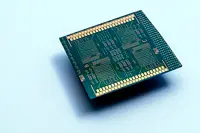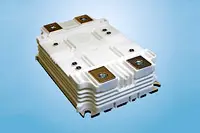Electronics News
Archive : 10 December 2014 год
 Intel has launched Intel IoT Platform, described as an end to end reference model designed to unify and simplify connectivity and security for the Internet of Things (IoT). The company also announced integrated hardware and software products based on the new platform.
Intel has launched Intel IoT Platform, described as an end to end reference model designed to unify and simplify connectivity and security for the Internet of Things (IoT). The company also announced integrated hardware and software products based on the new platform.
"With this platform we are continuing to expand our IoT product family beyond silicon with enhancements to our pre-integrated solutions that make IoT more accessible to solution providers," said Doug Davis, general manager of Intel's IoT Group. "IoT is a rapidly growing market but faces scalability hurdles. By simplifying the development process and making it easier to deploy new solutions that address market needs, we can help accelerate innovation."
The new offerings and relationships will make it easier for solution providers to move IoT from pockets of pilots to mainstream deployments with a repeatable foundation of building blocks that can be customized for limitless solutions. Data will be unlocked faster to extract meaningful information and value for consumers and businesses.
The Intel IoT Platform is also being supported by a range of hardware and software. Included in the roll out are:
• Wind River Edge Management System, a pre-integrated technology stack intended to help customers to build IoT solutions and to integrate IT systems.
• An updated Intel IoT Gateway, with performance improvements, support for lower cost memory options and a broader selection of communication options.
• Expanded support for cloud analytics, allowing IoT application developers to detect trends and anomalies in time series at big data scale.
• Enhanced Security for Intel IoT Gateways, a pre-validated solution from McAfee that brings advanced security management for gateway devices.
• Enhanced Privacy Identity technology, and
• An API and Traffic Management solution using Intel Mashery solutions to enable creation of building blocks that make it easy to build new software applications.
Author
Graham Pitcher
Source: www.newelectronics.co.uk
 A partnership between the Holst Centre, imec and Evonik has resulted in a general purpose 8bit microprocessor. The device has been made using complementary thin film transistors (TFTs) processed at temperatures compatible with plastic foil substrates (250°C).
A partnership between the Holst Centre, imec and Evonik has resulted in a general purpose 8bit microprocessor. The device has been made using complementary thin film transistors (TFTs) processed at temperatures compatible with plastic foil substrates (250°C).
The new 'hybrid' technology integrates two types of semiconductors – metal oxide for n-type TFTs and organic molecules for p-type TFTs – in a CMOS microprocessor circuit running at 2.1kHz. The partners describe the clock speed as 'unprecedented'.
The microprocessor consists of two chips – a processor core chip and a general purpose instruction generator (P2ROM). For the processor core chip, a complementary hybrid organic-oxide technology was used (p:n ratio 3:1). The n-type transistors are 250°C solution processed metal oxide TFTs with typically high charge carrier mobility (2cm2/Vs).
The p-type transistors are small molecule organic TFTs with mobility of up to 1cm2/Vs. Complementary logic allows for a more complex and complete standard cell library, including additional buffering in the core and the implementation of a mirror adder in the critical path.
The P2ROM is a one time programmable ROM configured using inkjet printing of a conductive silver ink. The chip – divided into a hybrid complementary part and a unipolar n-TFT part – can operate at frequencies up to 650Hz and from a Vdd of 10V.
Low temperature thin film electronics are said by the partners to have the potential to be produced cost effectively using large area manufacturing processes on plastic foils. Applications are expected to include RFID and NFC tags and sensors for smart food packaging, flexible displays, sensor arrays and OLED lamps.
Author
Graham Pitcher
Source: www.newelectronics.co.uk
 Infineon has launched two power module platforms that aim to improve the performance of high voltage IGBTs. The company is also offering a royalty free license of the design to IGBT power modules developers. The first products to use the platform will address 3.3kV (450A), 4.5kV (400A) and 6.5kV (275 A) applications using a package measuring 100 x 140 x 40mm.
Infineon has launched two power module platforms that aim to improve the performance of high voltage IGBTs. The company is also offering a royalty free license of the design to IGBT power modules developers. The first products to use the platform will address 3.3kV (450A), 4.5kV (400A) and 6.5kV (275 A) applications using a package measuring 100 x 140 x 40mm.
"We are pleased to present a package that answers the needs of industry for the foreseeable future," said Markus Hermwille, director of the High Power Segment within Infineon's Industrial Power Control Division. "We are certain the new module package will be of great benefit for all demanding high power applications. It is our aim to secure a broad and reliable base for the supply of the new high-power platform, which is why we are inviting the industry to make use of the design."
According to the company, the platform addresses emerging system requirements for high power density, energy efficiency, long lifecycle and robustness. Designed with flexibility in mind, the module allows similar parts to be connected in parallel, in turn enabling a simplified structure to be used for the DC link terminal and capacitor. The AC terminals can be connected in parallel with only one busbar.
The flexibility and scalability of the new modules will simplify system design considerably, thus supporting time to market requirements.
Author
Graham Pitcher
Source: www.newelectronics.co.uk
 Scientists at the University of York, in partnership with researchers from Tohuku University in Japan, have revealed how defects affect the atomic structure of magnetite and say this discovery may enable the development of more powerful electronic devices. Magnetite has a number of applications, including spintronics, where it can be used to help develop more efficient and higher capacity memories.
Scientists at the University of York, in partnership with researchers from Tohuku University in Japan, have revealed how defects affect the atomic structure of magnetite and say this discovery may enable the development of more powerful electronic devices. Magnetite has a number of applications, including spintronics, where it can be used to help develop more efficient and higher capacity memories.
Electrical currents in magnetite should be carried by electrons which all have the same spin state. However, it fails to demonstrate the characteristics expected and this is thought to be due to defects in its atomic structure.
Now, the researchers have resolved the atomic scale structure of two dimensional antiphase boundary defects (APBs) in the material. The team used theoretical modelling to predict the structure of the defects through a series of first principles calculations based on quantum mechanics, then confirmed it experimentally using high resolution transmission electron microscopy. The results showed that APB defects are unusually stable and cause antiferromagnetic coupling, leading to reduced spin polarisation.
Dr Keith McKenna, an EPSRC Fellow who led the team at York, said: "Our study has predicted what the atomic structure of the defects should be and then it confirmed it using electron microscopy. The spins on either side of these defects point in opposite directions creating areas that are not 100% spin polarised.
"We can now have confidence in making predictions about magnetite's electronic and magnetic properties which will help optimisation of the material. This will help the development of smaller more powerful electronic devices, particularly more efficient memory devices."
Author
Graham Pitcher
Source: www.newelectronics.co.uk
